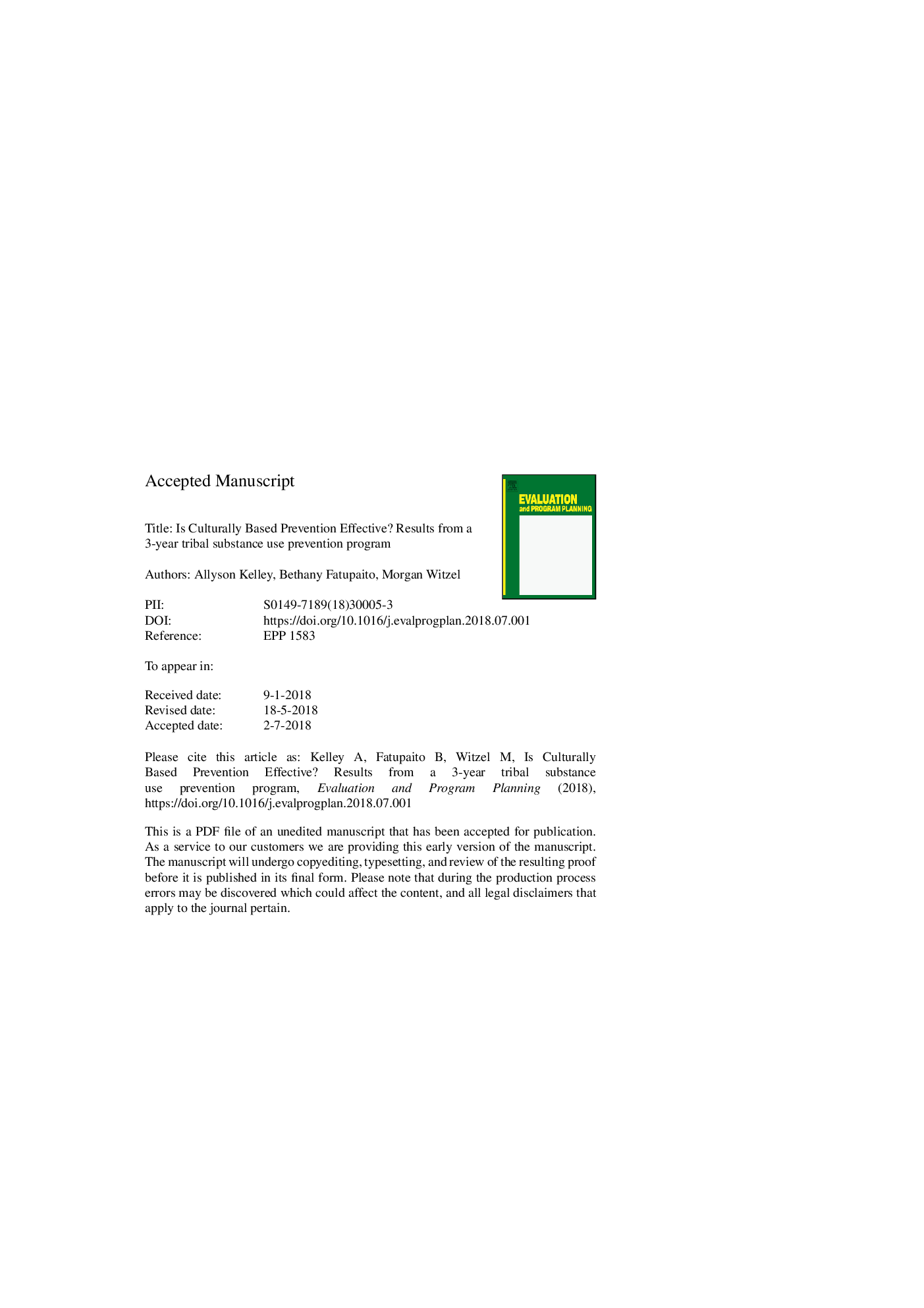| Article ID | Journal | Published Year | Pages | File Type |
|---|---|---|---|---|
| 6791840 | Evaluation and Program Planning | 2018 | 30 Pages |
Abstract
American Indian youth substance use is a major public health concern. To date, there has been limited evaluation of American Indian youth substance use prevention programs. Evaluation of prevention programs is necessary to understand the aspects of programming that are effective or not effective. This mixed-methods evaluation focuses on select outcomes of a 3-year culturally-based prevention program located in six American Indian communities in the Rocky Mountain Region. The goals of the prevention program are to reduce binge drinking by 30% and increase community readiness by 1-point over a 5- year period. In the first year of the program, community members worked with program staff to develop an evaluation plan that would measure the following outcomes: lowering substance use, increasing community readiness, and increasing the reach of prevention messaging through culturally based prevention. The primary research questions this outcome evaluation sought to answer were as follows: 1) Are there differences in American Indian youth who participate in culturally-based prevention activities compared with American Indian youth who do not participate in these activities? 2) Was the prevention program effective in increasing community readiness over a 3-year period? 3) Did community involvement in prevention activities increase overtime? Results from this evaluation indicate that substance use was similar among intervention (nâ¯=â¯200) and non-intervention youth (nâ¯=â¯369). This was somewhat surprising because Intervention youth reported higher levels of social support and community connections than non-intervention group youth. Community readiness decreased â.81 point from 2015 to 2017. The reach of prevention activities increased 365% from 2015 to 2017. We provide lessons learned that may help other communities as they document outcomes related to prevention efforts. Substance use is a multi-faceted problem facing our communities, families, schools, and nation. Innovative, effective, culturally-based prevention programs like the one highlighted in this paper underscore the need for primary prevention strategies.
Related Topics
Health Sciences
Medicine and Dentistry
Public Health and Health Policy
Authors
Allyson Kelley, Bethany Fatupaito, Morgan Witzel,
